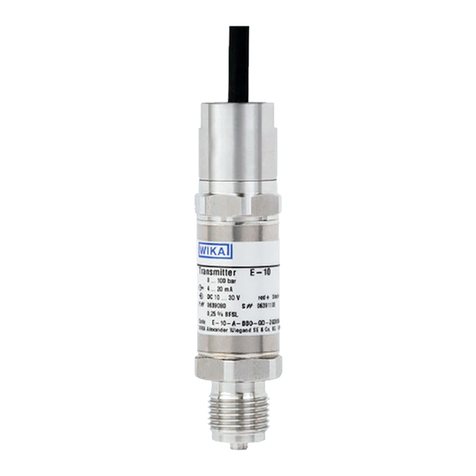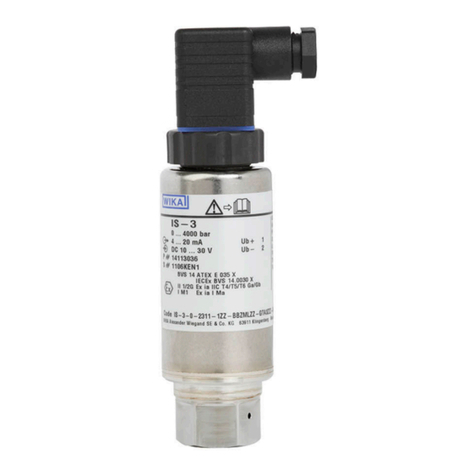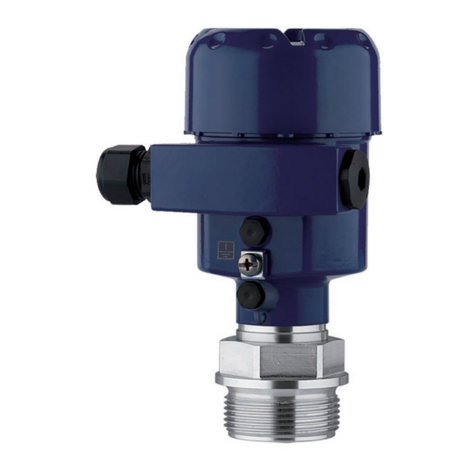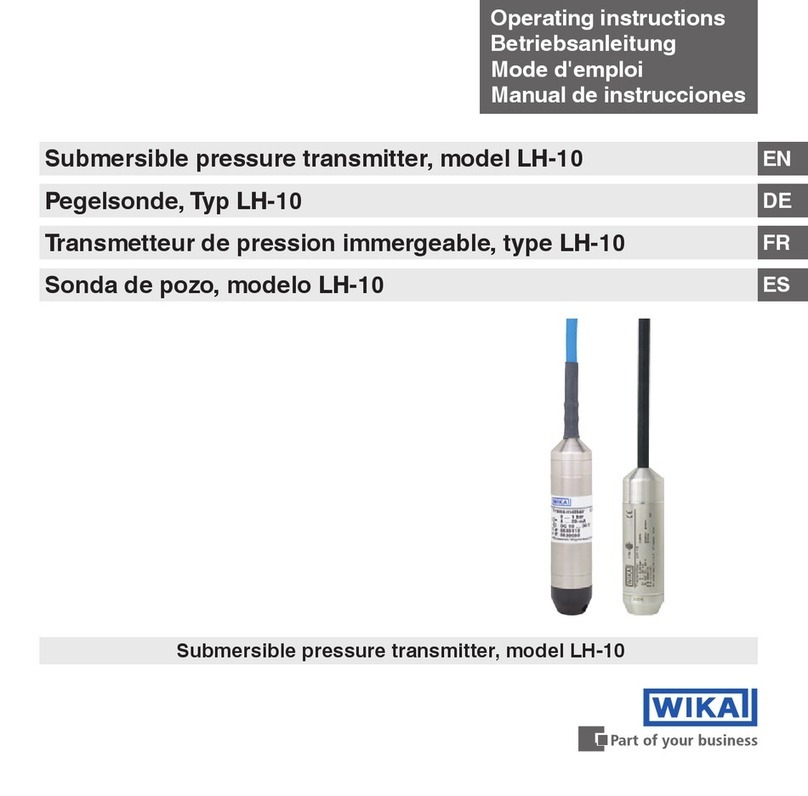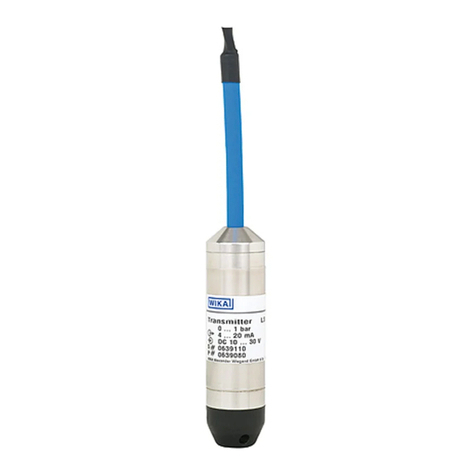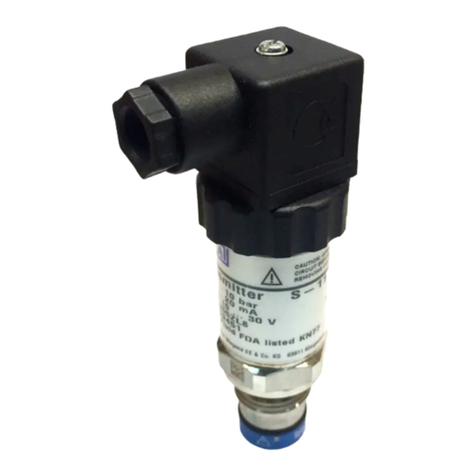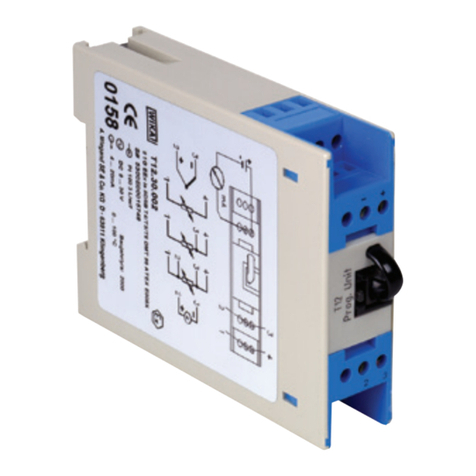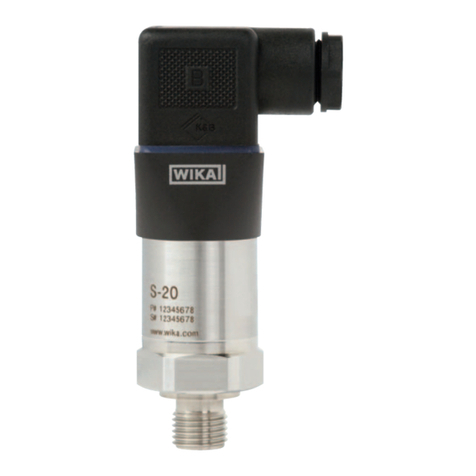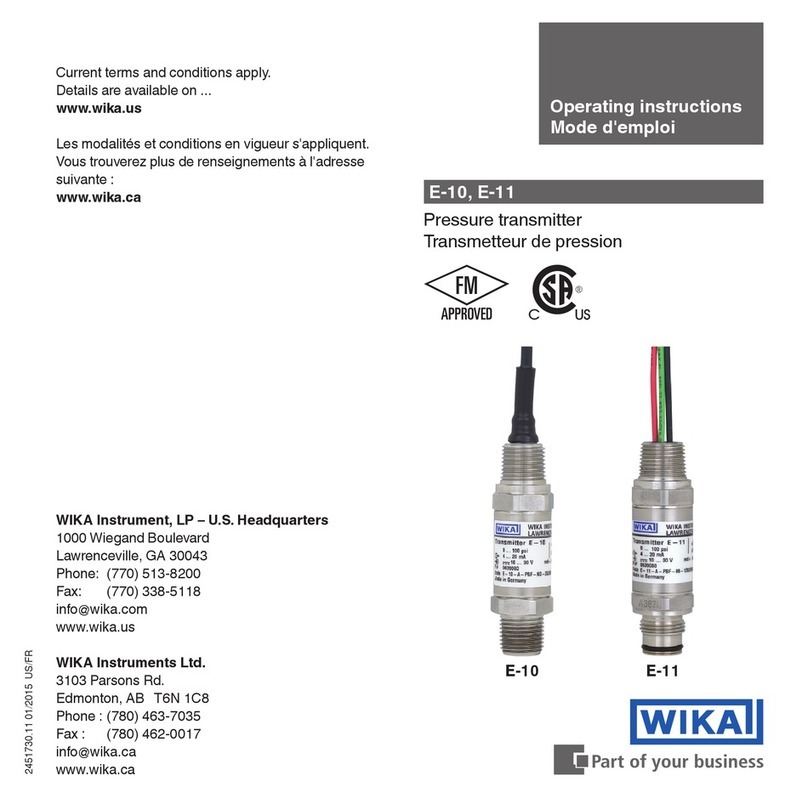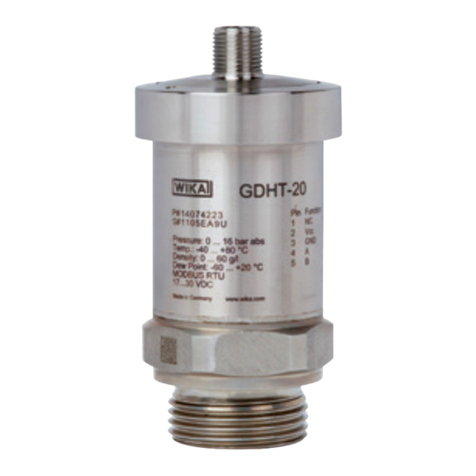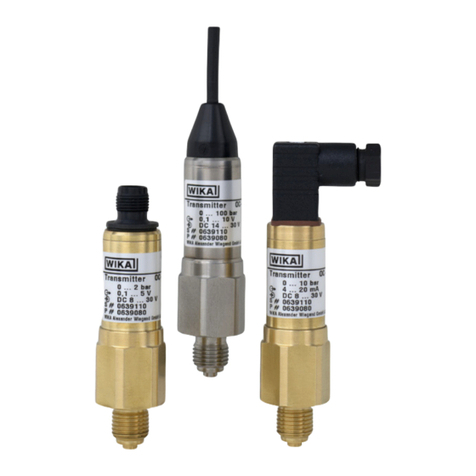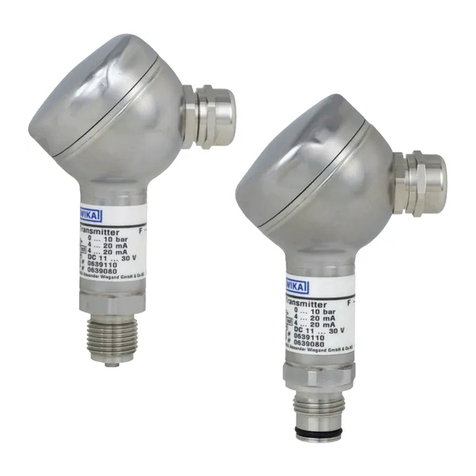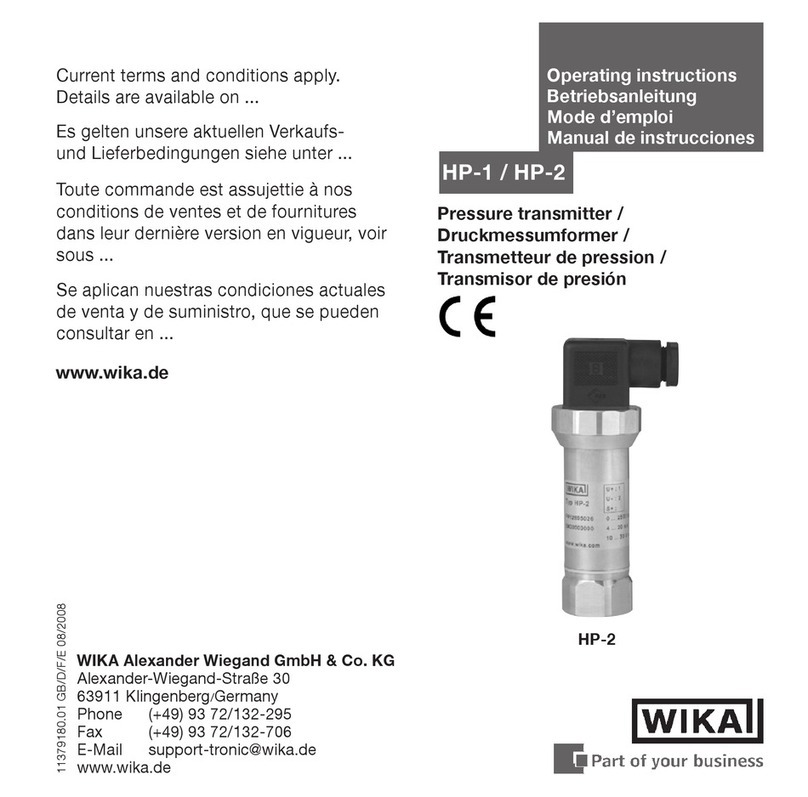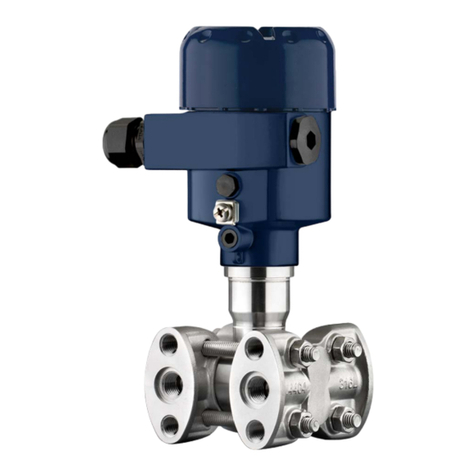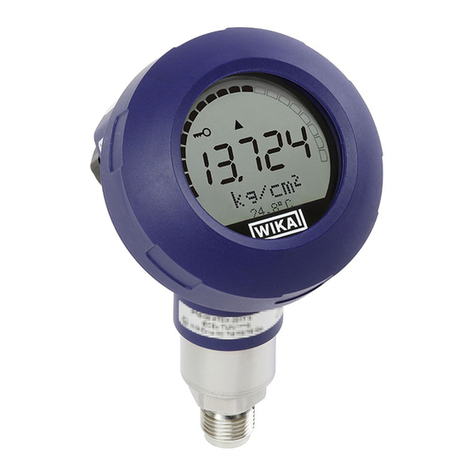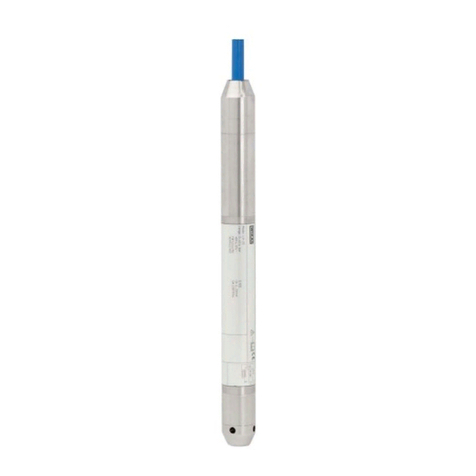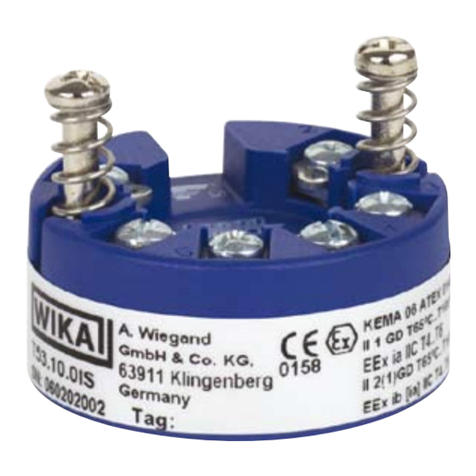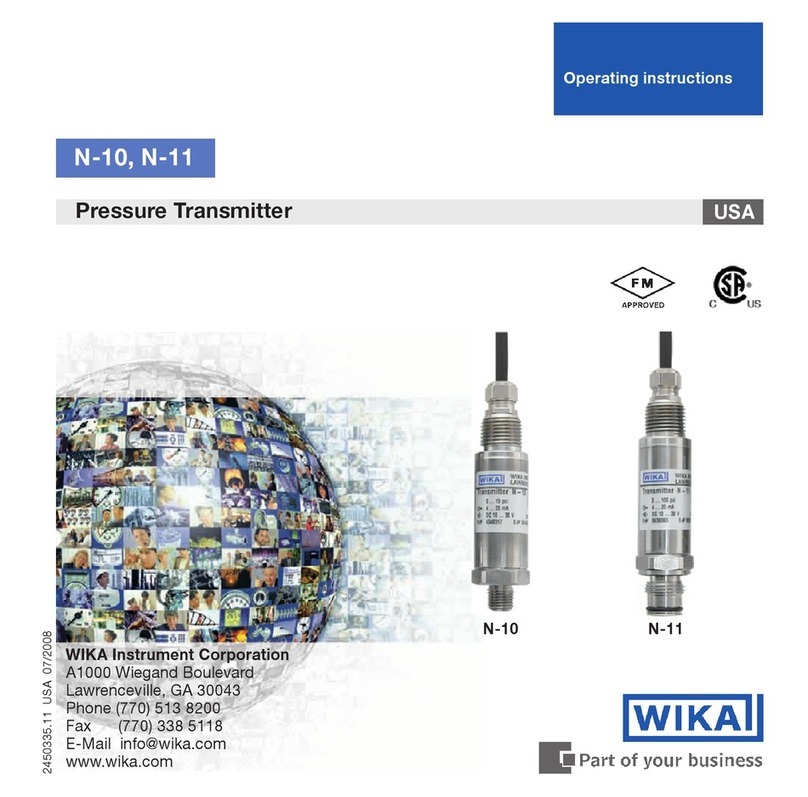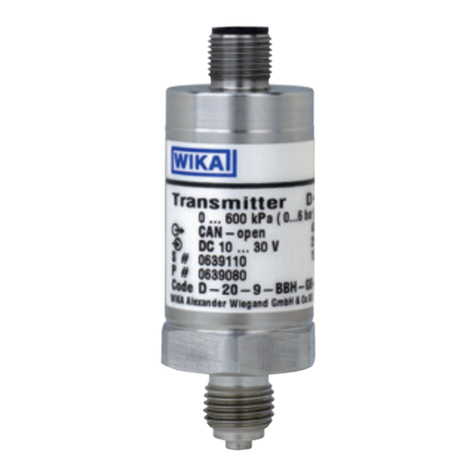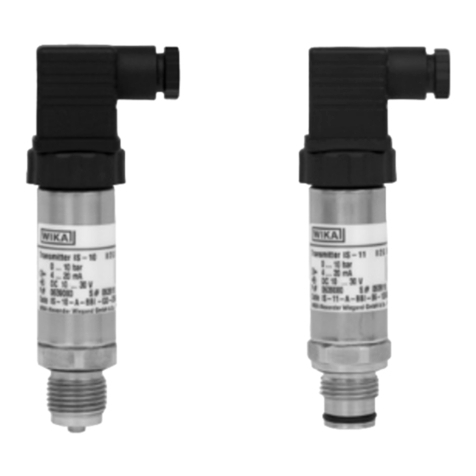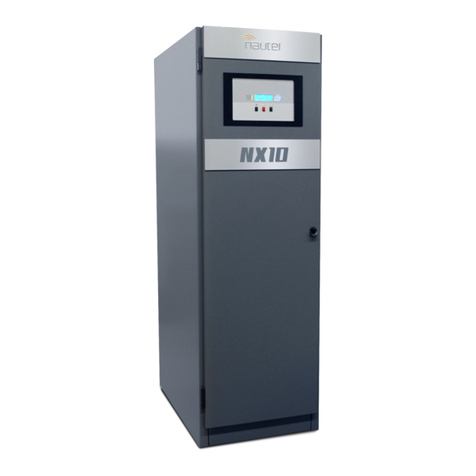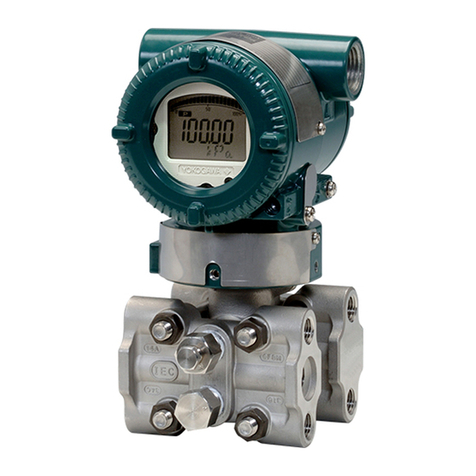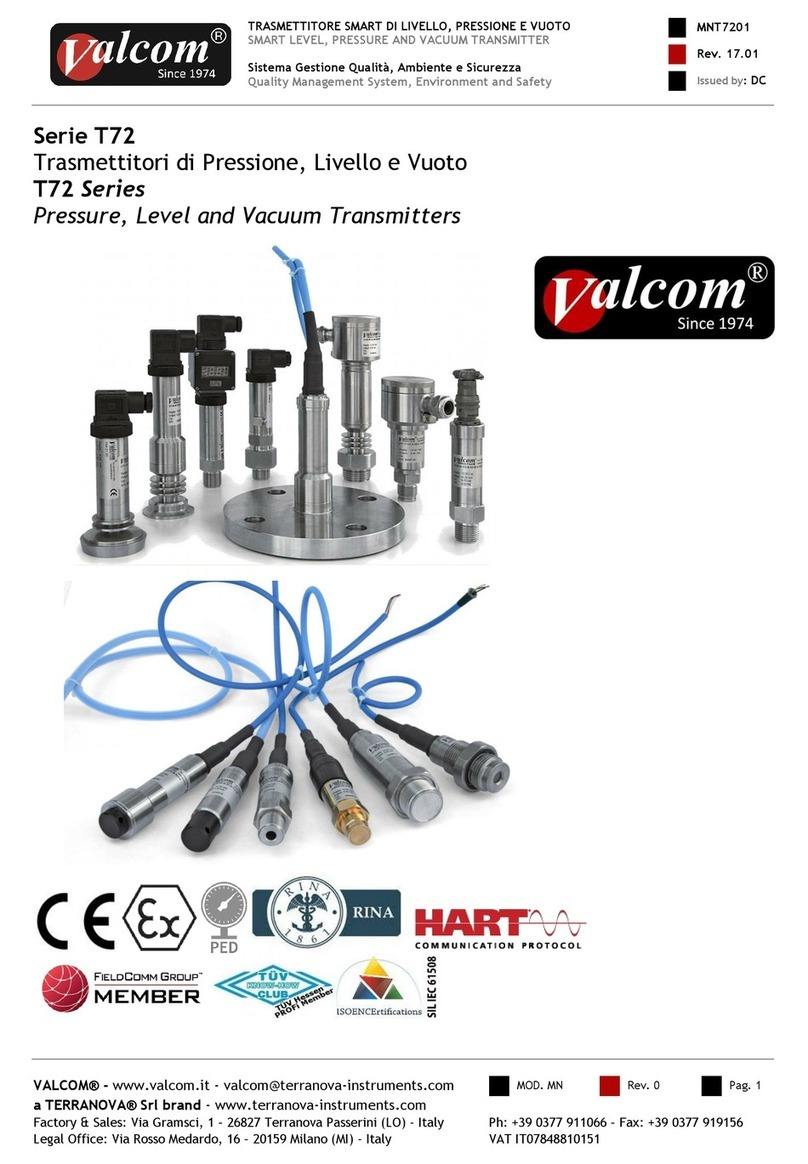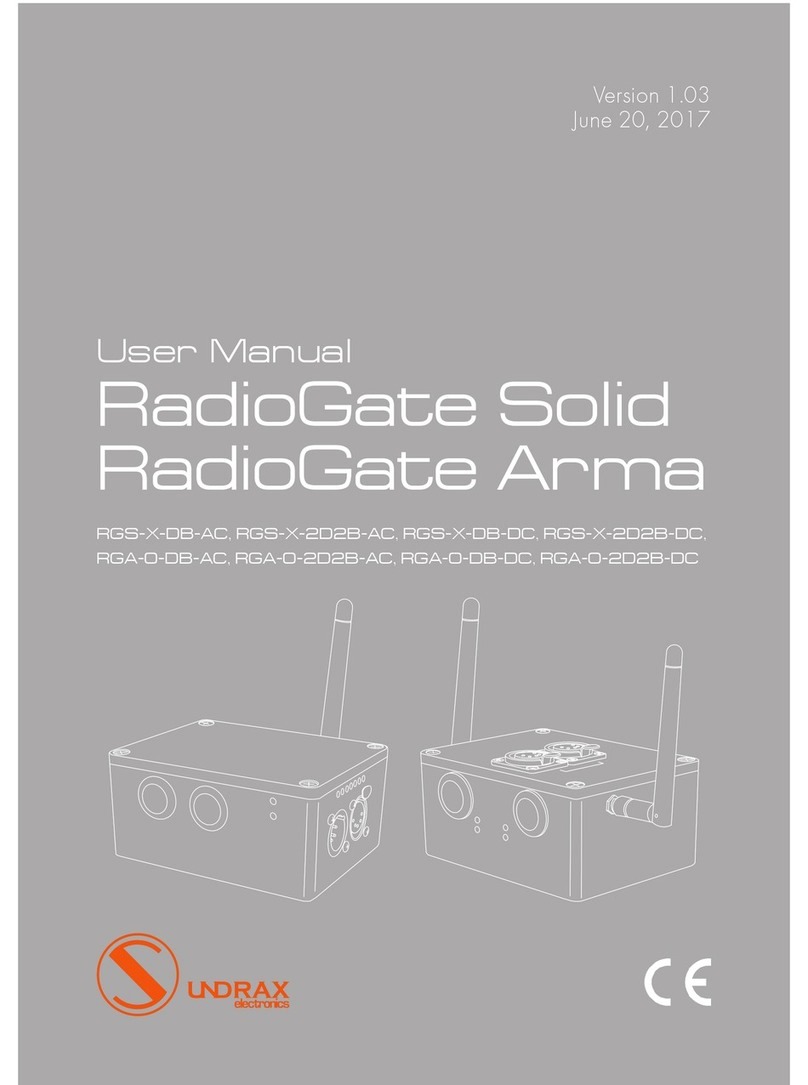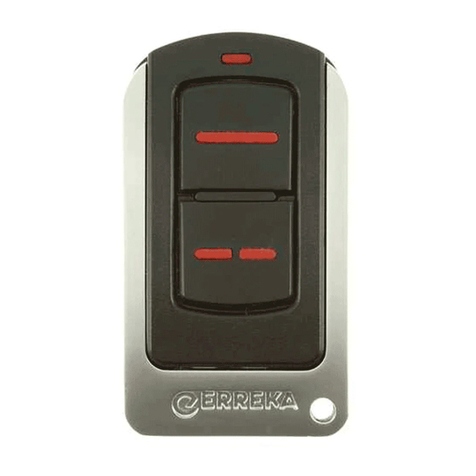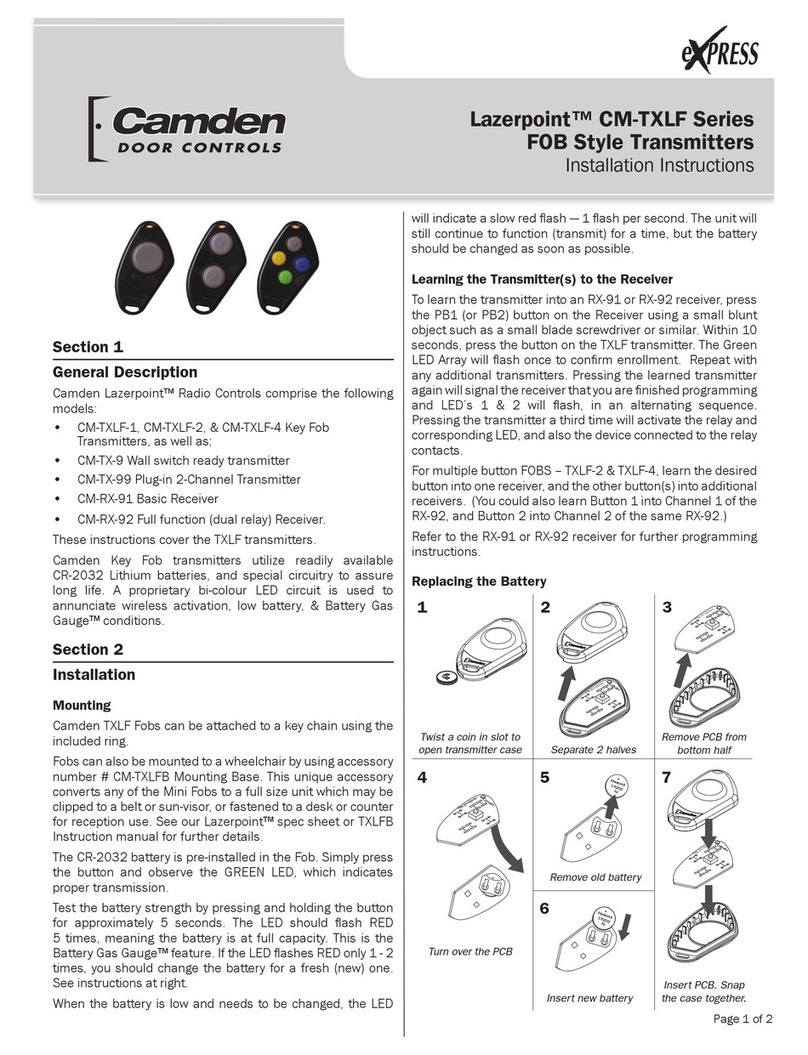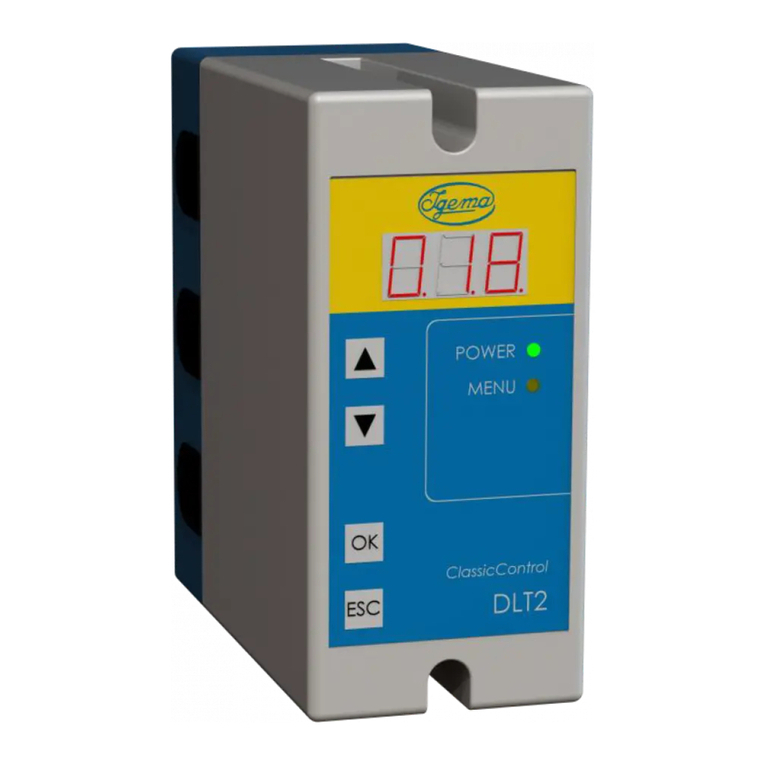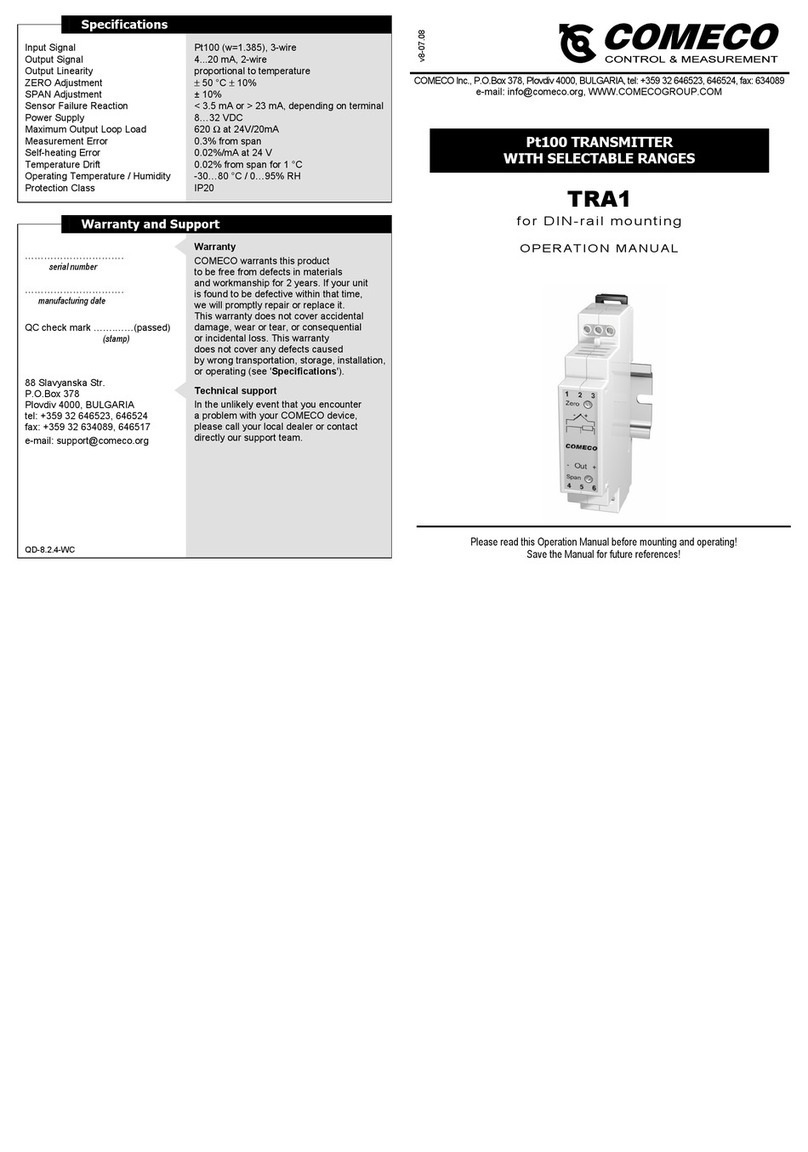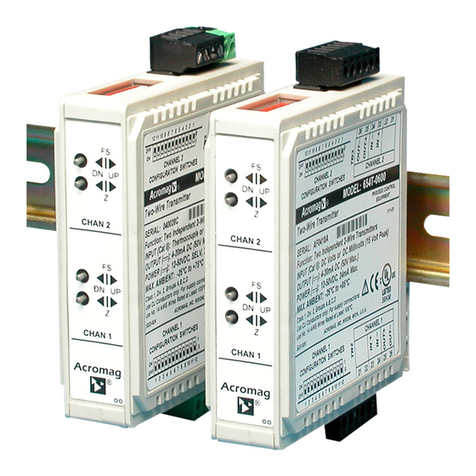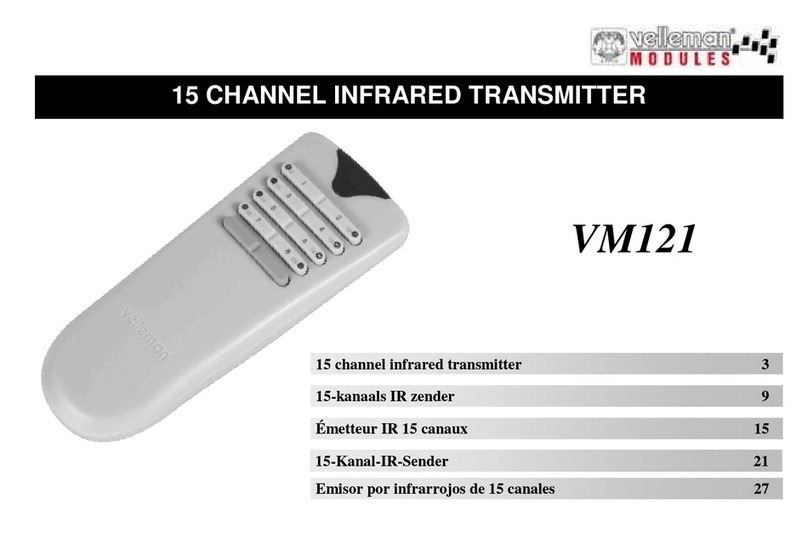WIKA T19.10 User manual

Operating Instructions
Betriebsanleitung
D
GB
Head Mounting Version Rail Mounting Version
Model T19.10 Model T19.30
Temperature Transmitter Model T19
Temperatur-Transmitter Typ T19

2
2143014.04 05/2010 GB/D
WIKA Operating Instructions Temperature Transmitter T19
D
GB Operating Instructions Model T19
Page
3 - 12
Betriebsanleitung Typ T19
Seite
13 - 21

3
2143014.04 05/2010 GB/D
GB
WIKA Operating Instructions Temperature Transmitter T19
1. Safety instructions 4
2. Before mounting 4
3. Conguration 5
4. Mounting 7
5. Electrical connections 8
6. Maintenance 9
7. Adjustment of transmitter 10
Contents
Contents
Warning!
This symbol warns you against actions that can cause
injury to people or damage to the instrument.

4
2143014.04 05/2010 GB/D
GB
WIKA Operating Instructions Temperature Transmitter T19
1. Safety instructions
When mounting, initiating and operating these transmitters
it is important to observe the respective national safety
precautions and regulations in eect (e.g. VDE 100).
Nonobservance of the applicable regulations may cause
severe injury to persons or damage to equipment. Only sta
with suitable qualication should work with these transmitters.
Before initial operation check the suitability for the intended application.
In particular, it is important to fulll the ambient and operation conditions
as specied in the WIKA data sheet TE 19.03. Use only congured
transmitters.
2. Before mounting
2.1 Transmitters with standard measuring ranges
Series T19 transmitters with standard measuring ranges are congurable
by means of solder bridges. Access to the solder bridges is gained after
removing the bottom of the casing. Mounted transmitters have to be
dismantled rst before they can be congured.
To work properly, the transmitter has to be congured. Make
sure that the transmitter is congured before mounting.
Conguration is to be carried out as described in section 3.
As an option standard measuring ranges can be congured at the factory
and in this case the appropriate measuring range is printed on the rating
plate. Transmitters with standard measuring range congured at the
factory can be immediately tted at the measuring point and put into
operation.
1. Safety instructions / 2. Before mounting

5
2143014.04 05/2010 GB/D
GB
WIKA Operating Instructions Temperature Transmitter T19
2.2 Transmitters with special measuring ranges
Series T19 transmitters with special measuring ranges cannot be
recongured. Special measuring ranges can be recognised by a 9 as last
digit in the model designation: T19.x0-xx0-9
Special measuring ranges are congured at the factory and can be
immediately tted at the measuring point and put into operation.
3. Conguration
3.1 Working sequence
Model T19.10 head mounting:
Remove case bottom
Model T19.30 rail mounting:
Remove case lid
Set the solder bridges for the
desired measuring range in
accordance with tables 1 – 7. The
measuring ranges to be selected
depend on the model of the
transmitter.
Model T19.10: Snapt the bottom to the case again
Model T19.30: Snapt the lid to the case again. Insert lid with its long
side into the case, then press lid to the case until it locks into place
Adjust zero point and span by means of potentiometer as described
in section 7!
Note the measuring range on the rating plate (for example, with
waterproof bretip pen)
2. Before mounting / 3. Conguration
Demonstration: Model T19.30
use a small screwdriver:
to prick the marking
unlook both locks of the snap-in
connection

Pt100 measuring ranges small
Measuring range Bridge
-50 ... +50 °C
0 ... +50 °C
0 ... +100 °C
0 ... +120 °C
0 ... +150 °C
0 ... +200 °C
Pt100 measuring ranges large
Measuring range Bridge
-50 ... +200 °C
0 ... +200 °C
0 ... +250 °C
0 ... +300 °C
0 ... +350 °C
0 ... +400 °C
Pt100 measur. ranges for HVAC
Measuring range Bridge
-30 ... +30 °C
-30 ... +50 °C
0 ... +60 °C
0 ... +80 °C
0 ... +100 °C
0 ... +120 °C
6
2143014.04 05/2010 GB/D
GB
WIKA Operating Instructions Temperature Transmitter T19
3.2 Position of solder bridges with Pt100
Head mounting:
Table 1: Model T19.10-1P0-1
Model T19.30-1P0-1
Table 2: Model T19.10-1P0-2
Model T19.30-1P0-2
Table 3: Model T19.10-1P0-3
Model T19.30-1P0-3
Rail mounting:
3. Conguration
1 2 5 6
3 4 7 8
1 2 5 6
3 4 7 8
1 2 5 6
3 4 7 8
1 2 5 6
3 4 7 8
1 2 5 6
3 4 7 8
1 2 5 6
3 4 7 8
1 2 5 6
3 4 7 8
1 2 5 6
3 4 7 8
1 2 5 6
3 4 7 8
1 2 5 6
3 4 7 8
1 2 5 6
3 4 7 8
1 2 5 6
3 4 7 8
1 2 5 6
3 4 7 8
1 2 5 6
3 4 7 8
1 2 5 6
3 4 7 8
1 2 5 6
3 4 7 8
1 2 5 6
3 4 7 8
1 2 5 6
3 4 7 8

7
2143014.04 05/2010 GB/D
GB
WIKA Operating Instructions Temperature Transmitter T19
4. Mounting
4.1 Mounting for head mounting version
The transmitters for head mounting (Model T19.10) are designed to be
mounted on a measuring insert in a DIN connecting head with form B.
The connecting wires of the measuring insert must be approx. 50 mm
long and insulated.
Insert the measuring insert with the mounted transmitter in the protective
sheath and ax in the connecting head using screws in pressure springs.
2257521.022257521.03
4. Mounting
Mounting example:

8
2143014.04 05/2010 GB/D
GB
WIKA Operating Instructions Temperature Transmitter T19
4.2 Mounting for rail mounting version
The transmitters for rail mounting (Model T19.30) are designed for
mounting on a standard rail or for wall mounting.
■
Rail mounting
The transmitter is axed without the use of auxiliary parts by sliding
onto a 35 mm top hat rail (DIN EN 50022-35).
De-mounting is done by freeing the snap parts.
■
Wall mounting
Lever the snap parts outwards with a screwdriver until they lock into
place. Mount case to the wall by means of two screws.
5. Electrical connections
In the case of the transmitters described here there is an
internal galvanic connection between the sensor input and
analogue output.
No external conducting is to be made (for example, by
earthing) between the connected temperature sensor and
analogue output!
We recommend the use of crimped connector sleeves in the
case of exible leads.
For Model T19.30 the connection cable of a temperature
probe must be shielded and grounded.
To connect a Pt100 sensor in a 2-wire connecting circuit:
Set a jumper between the input terminals 2 and 3 in accordance with
section 5.1.!
4. Mounting / 5. Electrical connections

9
2143014.04 05/2010 GB/D
GB
WIKA Operating Instructions Temperature Transmitter T19
5.1 Sensor input Pt100/Pt1000
Head mounting version: Rail mounting version:
5.2 Connect 4 ... 20 mA-loop
The electrical connection of Model T19.10 (head mounting version) is
made through the ⊕ and ⊖ terminals, while Model T19.30 (rail mounting
version) is connected through the terminals 4 and 5 (please refer to
page 10).
■
Maximum permissible terminal voltage: 30 V
■
Maximum permissible load RA (dependent upon the loop power
supply voltage UB) 1000 Ω at 30 V power supply UB
700 Ω at 24 V power supply UB
RA ≤ (UB - 10 V ) / 0.02 A with RA in Ω and UB in V
6. Maintenance
The temperature transmitters described here are maintenance-free!
The electronics incorporate no components which could be repaired or
replaced. Depending upon operating conditions, it may be advisable to
check the adjustment yearly. Adjustment as per section 7.
InputInput 4 ... 20 mA-loop
5. Electrical connections / 6. Maintenance

10
2143014.04 05/2010 GB/D
GB
WIKA Operating Instructions Temperature Transmitter T19
7. Adjustment of transmitter
The adjustment of the zero point and the span is carried out with
potentiometers. In order to adjust the transmitter output to optimal values
please adjust to the desired value by turning the potentiometer in one
direction only.
Example
Adjust the potentiometer in a clockwise direction.
The potentiometer has to be turned clockwise (the output current gets
higher) until the signal shows the desired value.
If the potentiometer is turned too much (the output current is too high),
the potentiometer must be turned back again until a value below the
desired value is reached (output current is too low). Adjust the potentio-
meter in a clockwise direction again until the desired value is reached.
Repeat steps as necessary.
Head mounting version: Rail mounting version:
Z S
Potentiometer
Z for zero point
S for span
7. Adjustment of transmitter

11
2143014.04 05/2010 GB/D
GB
WIKA Operating Instructions Temperature Transmitter T19
7.1 Preparation
■
Connect a suitable simulation source to the input of the T19 (Pt100).
When simulating a Pt100 connect the simulator in a 3-wire connecting
circuit. We recommend the use of passive resistances. Electronical
simulation sources can cause incorrect measurement values.
■
Connect a mA meter in 4 ... 20 mA-loop according to section 5 (with
Ri ≤ max. permissible load!) to measure the output signal.
■
Connect a suitable power supply to the transmitter.
7.2 Adjustment
Carry out steps through in the order given.
Set the lower value of the measurement range with the simulator, e.g.
-30 °C for measurement range -30 ... +50 °C.
Turn the zero potentiometer Z, until the output signal shows the
desired value.
Set the end value of the measurement range with the simulator, e.g.
+50 °C for measurement range -30 ... +50 °C.
Turn the span potentiometer S, until the output signal shows the
desired value.
High output currents (for example 20 mA) should therefore not exist
longer than 1 minute (in total) when doing adjustment. If adjustment
has to be repeated then allow the transmitter to cool down for approx.
20 minutes (disconnect the transmitter from the power supply).
Repeat step and check output signal of zero point.
Repeat step and check output signal of span.
7.3 Closing steps
Disconnect the simulator, the mA meter, and the power supply.
7. Adjustment of transmitter

12
2143014.04 05/2010 GB/D
GB
WIKA Operating Instructions Temperature Transmitter T19

D
WIKA Betriebsanleitung Temperatur-Transmitter T19 13
2143014.04 05/2010 GB/D
1. Sicherheitshinweise 14
1
2. Vor der Montage 14
3. Kongurieren 15
4. Montage 17
5. Elektrische Anschlüsse 18
6. Wartung 19
7. Justieren 20
Inhalt
Inhalt
Warnung!
Dieses Symbol warnt Sie vor Handlungen, die Schäden an
Personen oder am Gerät verursachen können.

D
WIKA Betriebsanleitung Temperatur-Transmitter T19
14
2143014.04 05/2010 GB/D
1. Sicherheitshinweise
Beachten Sie unbedingt bei Montage, Inbetriebnahme und
Betrieb dieser Transmitter die jeweils gültigen nationalen
Sicherheitsvorschriften (z. B.: VDE 100). Bei Nichtbeachten
der entsprechenden Vorschriften können schwere Körperver-
letzungen und/oder Sachschäden auftreten.
Nur entsprechend qualiziertes Personal darf an diesem
Gerät arbeiten.
Überprüfen Sie vor Inbetriebnahme die Eignung für die jeweilige
Anwendung. Beachten Sie insbesondere die im WIKA Datenblatt
TE 19.03 genannten zulässigen Umgebungs- und Betriebsbedingungen.
Verwenden Sie nur kongurierte Transmitter.
2. Vor der Montage
2.1 Transmitter mit Standardmessbereichen
Transmitter der Serie T19 mit Standardmessbereichen sind kongurier-
bar durch Lötbrücken. Die Lötbrücken sind zugänglich nach Abnahme
des Gehäusebodens. Montierte Transmitter müssen erst demontiert
werden, bevor konguriert werden kann.
Damit der Transmitter ordnungsgemäß arbeitet, muss er
konguriert sein. Bitte vergewissern Sie sich vor der Montage,
dass der Transmitter konguriert ist. Gegebenenfalls Kongu-
ration durchführen nach Kapitel 3.
Standardmessbereiche können optional werkseitig konguriert sein,
dann ist auf dem Typenschild der entsprechende Messbereich aufge-
druckt. Werkseitig kongurierte Transmitter mit Standardmessbereich
können sofort an der Messstelle eingebaut und in Betrieb genommen
werden.
1. Sicherheitshinweise / 2. Vor der Montage

D
WIKA Betriebsanleitung Temperatur-Transmitter T19 15
2143014.04 05/2010 GB/D
2.2 Transmitter mit Sondermessbereich
Transmitter der Serie T19 mit Sondermessbereich können nicht umkon-
guriert werden. Sondermessbereiche sind gekennzeichnet durch eine 9
an der letzten Stelle der Typbezeichnung: T19.x0-xx0-9
Sondermessbereiche sind werkseitig konguriert und können sofort an
der Messstelle eingebaut und in Betrieb genommen werden.
3. Kongurieren
3.1 Reihenfolge der Arbeitsschritte
Typ T19.10 Kopfversion:
Gehäuseboden abnehmen
Typ T19.30 Schienenversion:
Gehäusedeckel abnehmen
Lötbrücken für gewünschten
Messbereich setzen gemäß der
Tabellen 1 – 7. Die wählbaren
Messbereiche sind abhängig vom
Typ des Transmitters.
Typ T19.10: Gehäuseboden wieder aufsetzen
Typ T19.30: Gehäusedeckel wieder aufsetzen, Deckel mit seiner
Längsseite in das Gehäuse einsetzen, dann Deckel bis zum Einra-
sten aufdrücken
Nullpunkt und Spanne mit Potentiometer justieren gemäß Kapitel 7!
Messbereich auf Typenschild notieren (z. B. mit wasserfestem
Faserschreiber)
2. Vor der Montage / 3. Kongurieren
Darstellung: Typ T19.30
Mit kleinem Schraubendreher:
in Markierung einstechen
beide Einrastungen der Snap-In
Verbindung entriegeln

Pt100-Messbereiche klein
Messbereich Lötbrücke
-50 ... +50 °C
0 ... +50 °C
0 ... +100 °C
0 ... +120 °C
0 ... +150 °C
0 ... +200 °C
Pt100-Messbereiche groß
Messbereich Lötbrücke
-50 ... +200 °C
0 ... +200 °C
0 ... +250 °C
0 ... +300 °C
0 ... +350 °C
0 ... +400 °C
Pt100-Messbereiche für HKL
Messbereich Lötbrücke
-30 ... +30 °C
-30 ... +50 °C
0 ... +60 °C
0 ... +80 °C
0 ... +100 °C
0 ... +120 °C
D
WIKA Betriebsanleitung Temperatur-Transmitter T19
16
2143014.04 05/2010 GB/D
3.2 Lage der Lötbrücken bei Pt100
Kopfversion:
1 2 5 6
3 4 7 8
1 2 5 6
3 4 7 8
1 2 5 6
3 4 7 8
1 2 5 6
3 4 7 8
1 2 5 6
3 4 7 8
1 2 5 6
3 4 7 8
Tabelle 1: Typ T19.10-1P0-1
Typ T19.30-1P0-1
Tabelle 2: Typ T19.10-1P0-2
Typ T19.30-1P0-2
1 2 5 6
3 4 7 8
1 2 5 6
3 4 7 8
1 2 5 6
3 4 7 8
1 2 5 6
3 4 7 8
1 2 5 6
3 4 7 8
1 2 5 6
3 4 7 8
1 2 5 6
3 4 7 8
1 2 5 6
3 4 7 8
1 2 5 6
3 4 7 8
1 2 5 6
3 4 7 8
1 2 5 6
3 4 7 8
1 2 5 6
3 4 7 8
Tabelle 3: Typ T19.10-1P0-3
Typ T19.30-1P0-3
Schienenversion:
3. Kongurieren

D
WIKA Betriebsanleitung Temperatur-Transmitter T19 17
2143014.04 05/2010 GB/D
4. Montage
4.1 Montage bei Ausführung Kopfversion
Die Transmitter in Ausführung Kopfversion (Typ T19.10) sind vorgesehen
zur Montage auf einem Messeinsatz im DIN-Anschlusskopf der Form B.
Die Anschlussdrähte des Messeinsatzes müssen ca. 50 mm lang und
isoliert ausgeführt sein.
Messeinsatz mit montiertem Transmitter in die Schutzarmatur einstecken
und im Anschlusskopf mit Schrauben federnd befestigen.
2257521.022257521.03
4. Montage
Montagebeispiel:

D
WIKA Betriebsanleitung Temperatur-Transmitter T19
18
2143014.04 05/2010 GB/D
4.2 Montage bei Ausführung Schienenversion
Die Transmitter in Ausführung Schienenversion (Typ T19.30) sind vorge-
sehen zur Montage auf einer Normschiene.
■
Montage auf Normschiene
Das Befestigen erfolgt ohne Hilfsmittel durch Aufrasten auf eine
35 mm Hutschiene (DIN EN 50022-35).
Demontage durch Entriegeln der Rastelemente.
■
Wandmontage
Mit Schraubendreher die Rastelemente bis zum Einrasten nach außen
hebeln. Gehäuse mit zwei Schrauben an der Wand montieren.
5. Elektrische Anschlüsse
Bei den hier beschriebenen Transmittern besteht intern
eine galvanische Verbindung von Sensoreingang und
Analogausgang.
Es darf keine äußere leitende Verbindung (z. B. über Erde)
zwischen angeschlossenem Temperatursensor und Analog-
ausgang geben!
Bei Litzenadern empfehlen wir das Verwenden von
gecrimpten Adernendhülsen.
Das Anschlusskabel des Temperaturfühlers muss bei Typ
T19.30 geschirmt und geerdet sein.
Bei Anschluss eines Pt100-Sensors in 2-Leiter-Anschlussschaltung:
Setzen Sie eine Drahtbrücke zwischen den Eingangsklemmen 2 und 3
gemäß Kapitel 5.1!
4. Montage / 5. Elektrische Anschlüsse

D
WIKA Betriebsanleitung Temperatur-Transmitter T19 19
2143014.04 05/2010 GB/D
5.1 Sensoreingang Pt100/Pt1000
Kopfversion: Schienenversion:
5.2 Anschluss der 4 ... 20 mA-Schleife
Der elektrische Anschluss erfolgt bei der Kopfversion Typ T19.10 über
die Anschlussklemmen ⊕ und ⊖ bzw. bei der Schienenversion Typ
T19.30 über die Klemmen 4 und 5 (siehe Seite 20).
■
Maximal zulässige Klemmenspannung: 30 V
■
Maximal zulässige Bürde RA (abhängig von Spannung UB der
Schleifenversorgung) 1000 Ω bei 30 V Hilfsenergie UB
700 Ω bei 24 V Hilfsenergie UB
RA ≤ (UB - 10 V) / 0,02 A mit RA in Ω und UB in V
6. Wartung
Die hier beschriebenen Temperatur-Transmitter sind wartungsfrei!
Die Elektronik enthält keinerlei Bauteile, welche repariert oder ausge-
tauscht werden könnten. Je nach Einsatzbedingungen empfehlen wir
eine jährliche Überprüfung der Justage gemäß Kapitel 7.
EingangEingang 4 ... 20 mA - Schleife
5. Elektrische Anschlüsse / 6. Wartung

D
WIKA Betriebsanleitung Temperatur-Transmitter T19
20
2143014.04 05/2010 GB/D
7. Justieren der Transmitter
Die Justage von Nullpunkt und Spanne wird mit Potentiometern durchge-
führt. Um die Transmitter optimal zu justieren empfehlen wir, den Sollwert
einseitig anzufahren.
Beispiel
Potentiometer im Uhrzeigersinn anfahren:
Potentiometer in Uhrzeigersinn drehen (Ausgangsstrom wird größer), bis
Ausgangssignal den gewünschten Wert hat.
Wurde das Potentiometer zu weit gedreht (Ausgangsstrom zu
groß), dann zuerst das Potentiometer wieder deutlich zurück drehen
(Ausgangsstrom ist jetzt wieder deutlich zu klein), anschließend den
gewünschten Ausgangsstrom erneut durch Drehen im Uhrzeigersinn
anfahren.
Kopfversion: Schienenversion:
Z S
Potentiometer
Z für Nullpunkt
S für Spanne
7. Justieren der Transmitter
This manual suits for next models
2
Table of contents
Languages:
Other WIKA Transmitter manuals
Popular Transmitter manuals by other brands

TC FLUID CONTROL
TC FLUID CONTROL KMS-2 Installation and operating manual

ALFAtron
ALFAtron ALF-TP405PT manual

Electronic Broadcast Equipment
Electronic Broadcast Equipment SIRIO 2000T User and maintenance manual

ABB
ABB TB82PH operating instructions
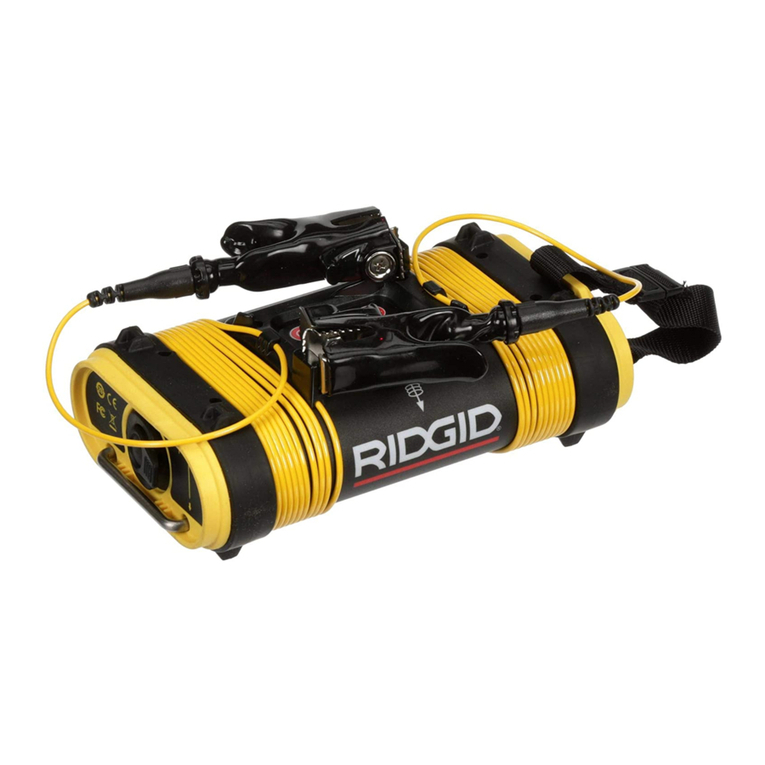
RIDGID
RIDGID SeekTech ST-305 operating instructions
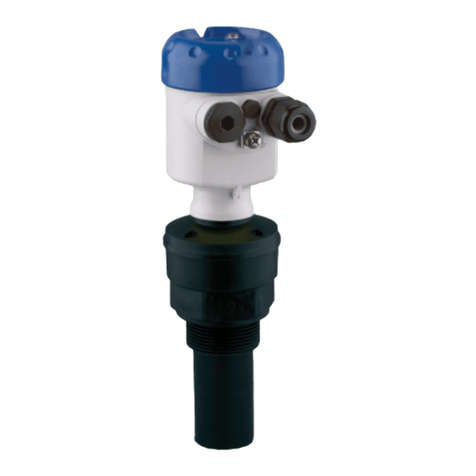
KROHNE
KROHNE OPTISOUND 3020 C Handbook
